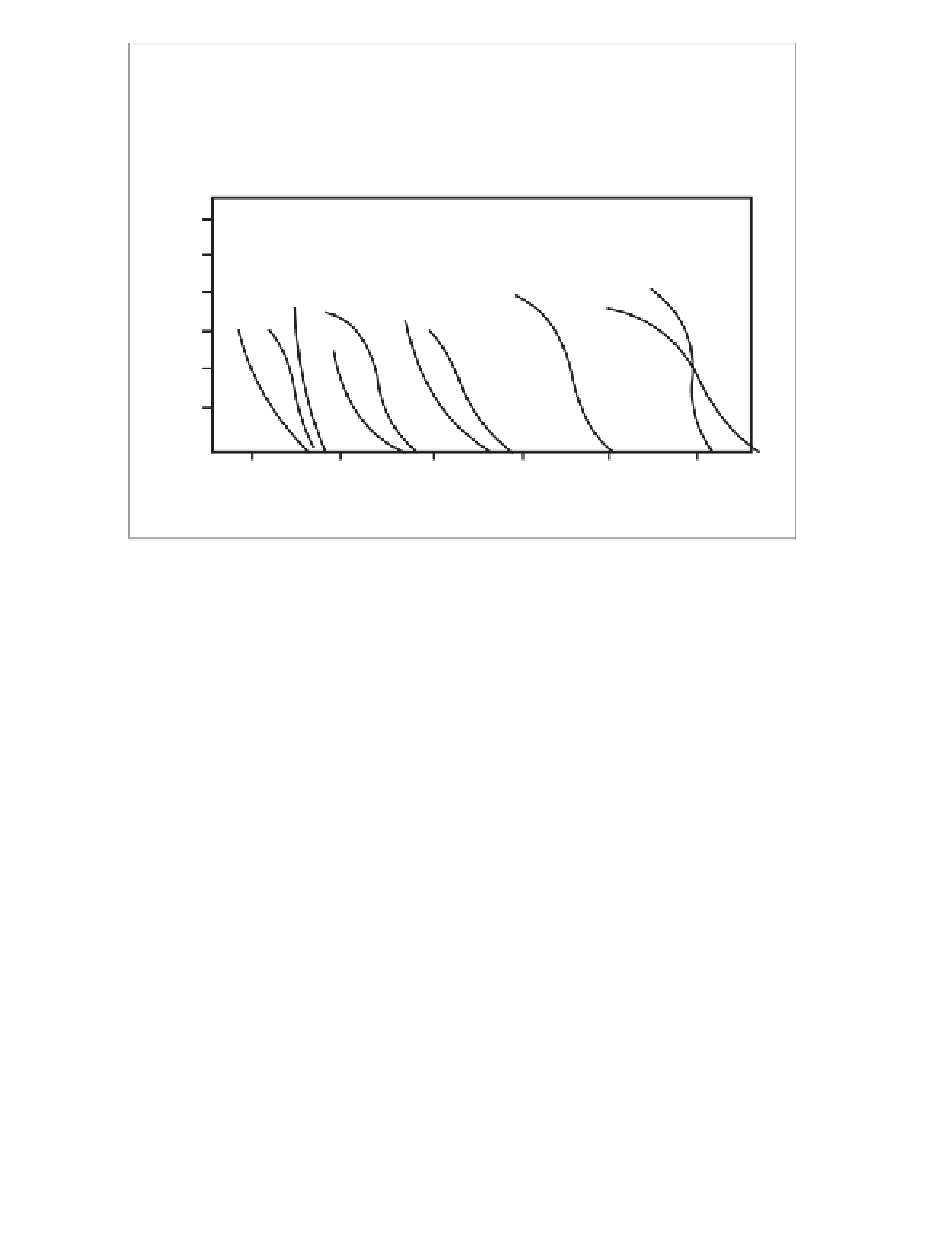Biomedical Engineering Reference
In-Depth Information
0 . 1
ppm
1 . 0
10
100
1000
1%
ppm
ppm
ppm
ppm
Polymer concentration
FIGURE 7.14
Theflocculation rates as a function of amount of added gum. The theoretical
rate, if rapid conditions are assumed, in a 0.05 M MgCl
2
solution at 25°C is about 12 × 10
-18
(1/cm
3
).
Non-Proteineous Gums
Many attempts have been made to evaluate the basic mechanisms behind the dis-
persion stabilizing properties of so-called “non-proteineous gums”. The classical
steric stabilization (steric hindrance created by a layer of adsorbed polymer at the
interface) did not appear to exist for some gums (rigidity, water solubility, weak
adsorption).
Burgenstahl et al.
195
examined a number of technical gums and showed that the
gums that affect flocculation rates of monodispersed polystyrene latex are absorbed
on the latex and infect steric stabilization in the mechanism that enhances the stability
of dispersed particles. Their conclusions are supported by surface tension measure-
ments (
Figure 7.14
).
Using surface tension measurements, the gums were absorbed
on the latex modifying the steric stabilization in the mechanism that enhances
stability of the dispersed particles. According to Bergenstahl
196
gums adsorb very
weakly on solid particles like polystyrene but will not adsorb directly on oil/water
interfaces. If monomeric emulsifiers or proteins are used in combination with gums,
the gum adsorbs onto the first layer of the emulsifier behaving like a protective
colloid. The traditional term “protective colloid” is only used for surface active gums
like gum arabic.
Studies by Garti et al.
197-200
demonstrated that all three galactomannans (guar,
LBG, and fenugreek) have surface activity and reduce both surface and interfacial
tensions even after almost complete removal of proteinaceous matter. Guar and

Search WWH ::

Custom Search